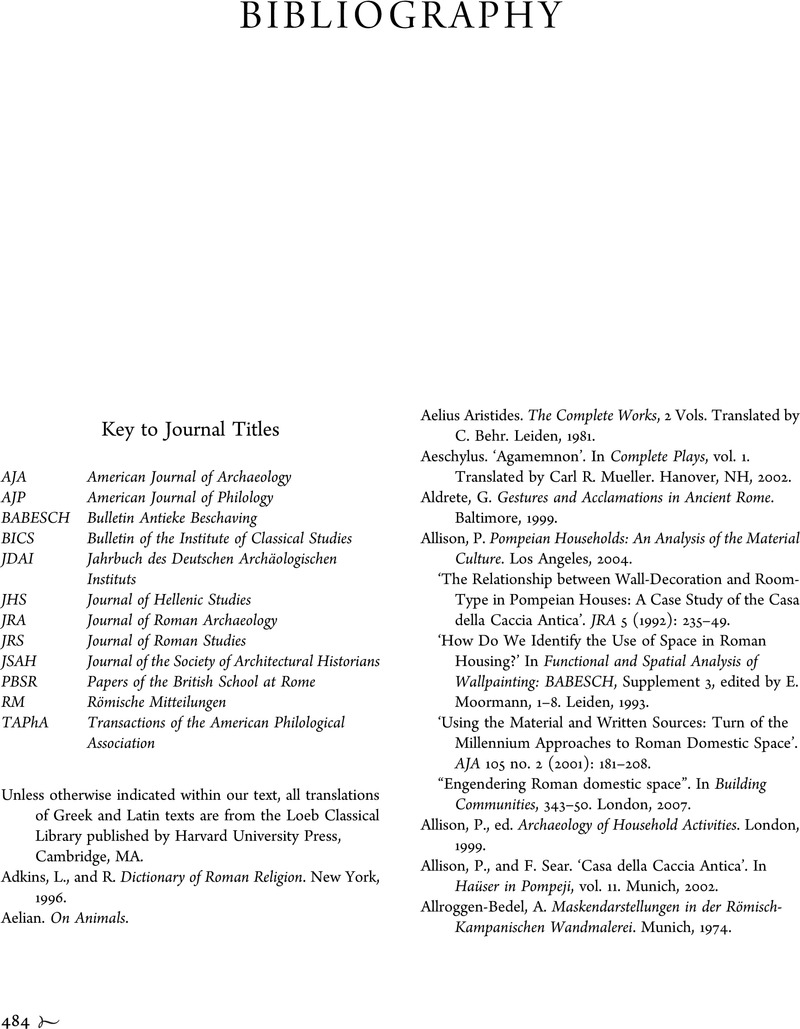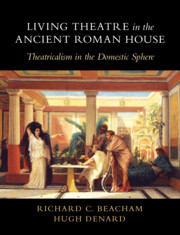Book contents
- Living Theatre in the Ancient Roman House
- Living Theatre in the Ancient Roman House
- Copyright page
- Dedication
- Contents
- Figures
- Acknowledgements
- Chapter 1 Roman Theatricality and Theatricalism
- Chapter 2 Theatrical Life at Pompeii
- Chapter 3 Performance at Pompeii and the Range of Roman ‘Theatrical’ Entertainments
- Chapter 4 Politics and Patronage at Pompeii
- Chapter 5 Theatricalism and the Roman House
- Chapter 6 Skenographia
- Chapter 7 Skenographia at Boscoreale, Oplontis and Pompeii
- Chapter 8 Skenographia on the Palatine and at Pompeii
- Chapter 9 Fourth Style Skenographia
- Chapter 10 Triclinium Theatricality
- Bibliography
- Index
- References
Bibliography
Published online by Cambridge University Press: 22 December 2022
- Living Theatre in the Ancient Roman House
- Living Theatre in the Ancient Roman House
- Copyright page
- Dedication
- Contents
- Figures
- Acknowledgements
- Chapter 1 Roman Theatricality and Theatricalism
- Chapter 2 Theatrical Life at Pompeii
- Chapter 3 Performance at Pompeii and the Range of Roman ‘Theatrical’ Entertainments
- Chapter 4 Politics and Patronage at Pompeii
- Chapter 5 Theatricalism and the Roman House
- Chapter 6 Skenographia
- Chapter 7 Skenographia at Boscoreale, Oplontis and Pompeii
- Chapter 8 Skenographia on the Palatine and at Pompeii
- Chapter 9 Fourth Style Skenographia
- Chapter 10 Triclinium Theatricality
- Bibliography
- Index
- References
Summary

- Type
- Chapter
- Information
- Living Theatre in the Ancient Roman HouseTheatricalism in the Domestic Sphere, pp. 484 - 508Publisher: Cambridge University PressPrint publication year: 2023



